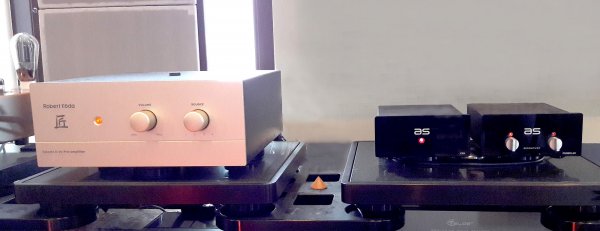What is better to colour up a grey weekend than a highend -shoot out- with two friends and three phonostages.
Our opponents were two well known candidates from Germany, -Absolute Phono inside- from Clearaudio, the Thöress Phono and a newcomer, the AS Phonolab from Audiospecials, also from Germany.
If you want to judge precise transients and authenticity, a real challenge for even the best phonostages is „Friday night in San Francisco – Paco de Lucia, Al die Meola and John MC Laughlin.
Preamp was the KODA Takumi K-10 that fitted perfect.
First, the Clearaudio got a decision.
Absolute O.K. But not more. A bit boaring, but nothing we expected from a phonostage over 10000 Dollars.
The two candidates left constituted another league.
The Thöress, in all points wonderful and colourful, such as expected from a tube phono. Better stage, more depth and transparancy well focused. Really good, that was great fun. The heaven turned from grey to blue.
We were really satisfied. Until we switched over to the AS Phonolab.
In all points a further step up. Clear sound, precise attack, a transients playback from the guitar strings that shows what precision and dynamic a vinyl record can offer.
Wide stage with depth, much space between the three musicians, well focused on the point, we could nearly see their shapes. Easy to understand what intention the Audio engineer mixed up in the recording studio.
Common sense. Really fast, sharped focused and so colourful. Natural high frequencies without any sharpness. Best transients playback ever heard yet. A perfect conjunction between precision and authenticity.
We assumed the reason. The AS from Audiospecials has its roots in the PRO Audio section. A look inside tells stories about professional engineering. Such qualities are not coincidence. Sometimes the unexpected things are the best.
But the way is the reward and so we look for further opponents. May be an EMT, but not easy to get.



